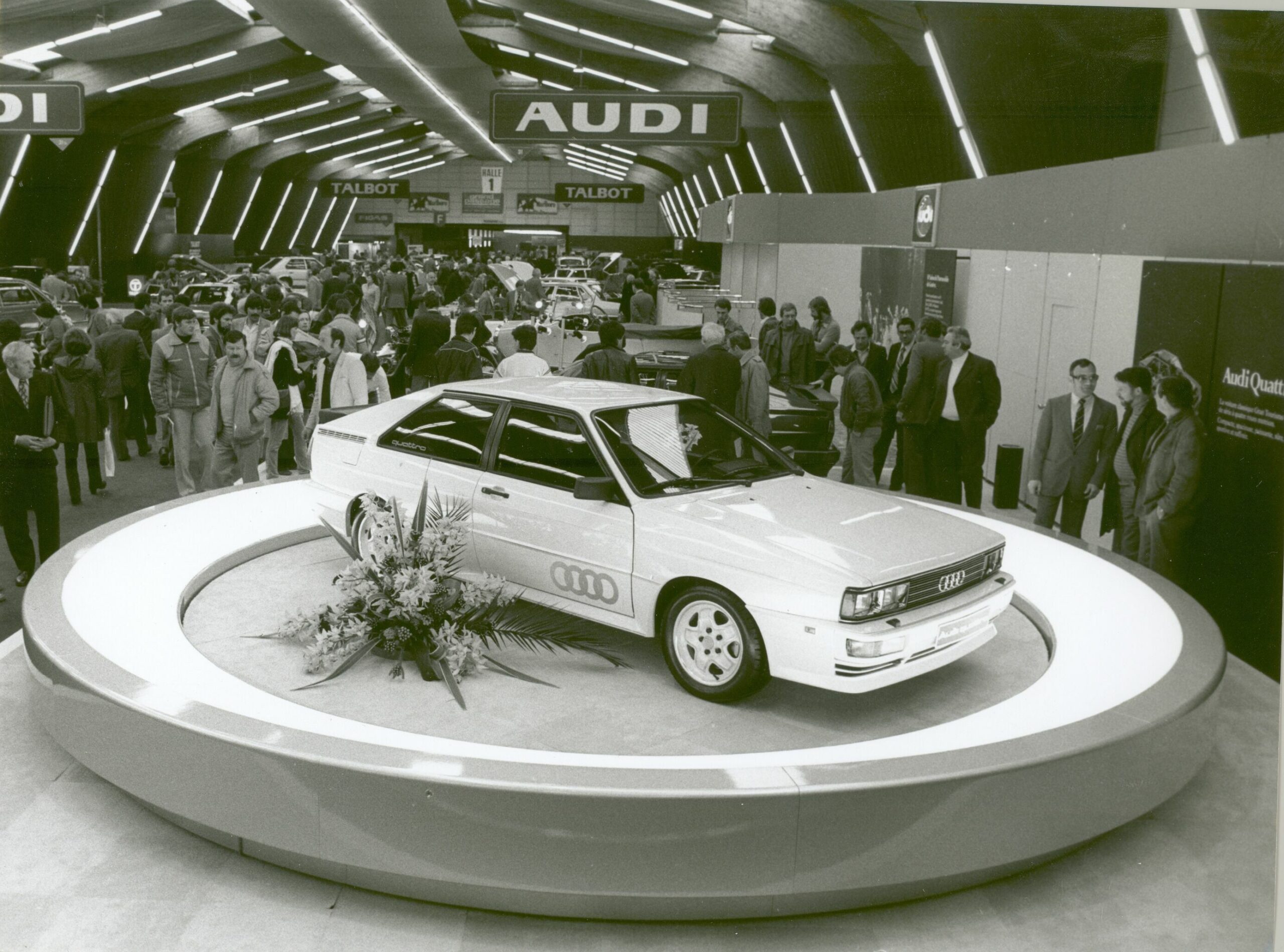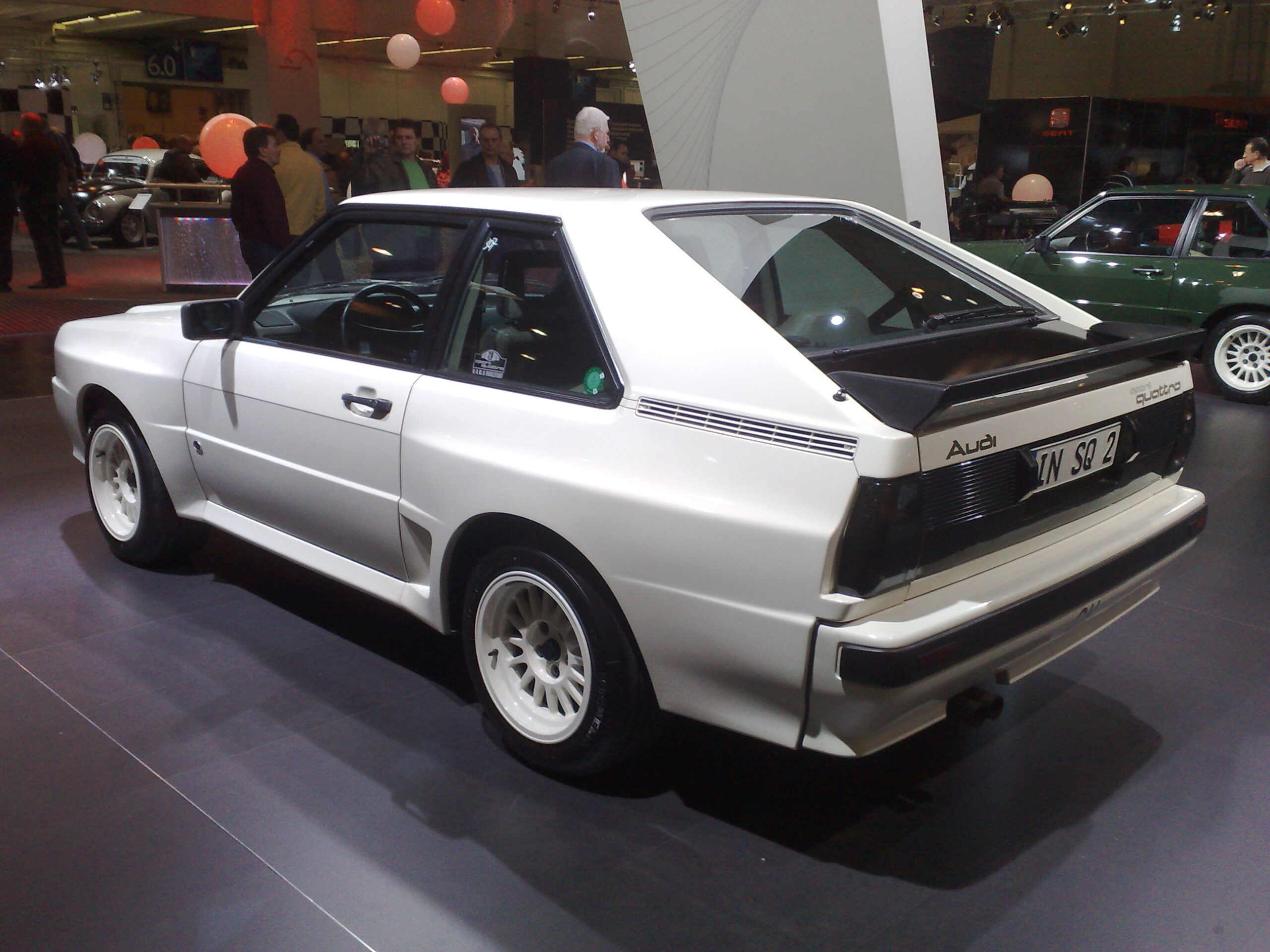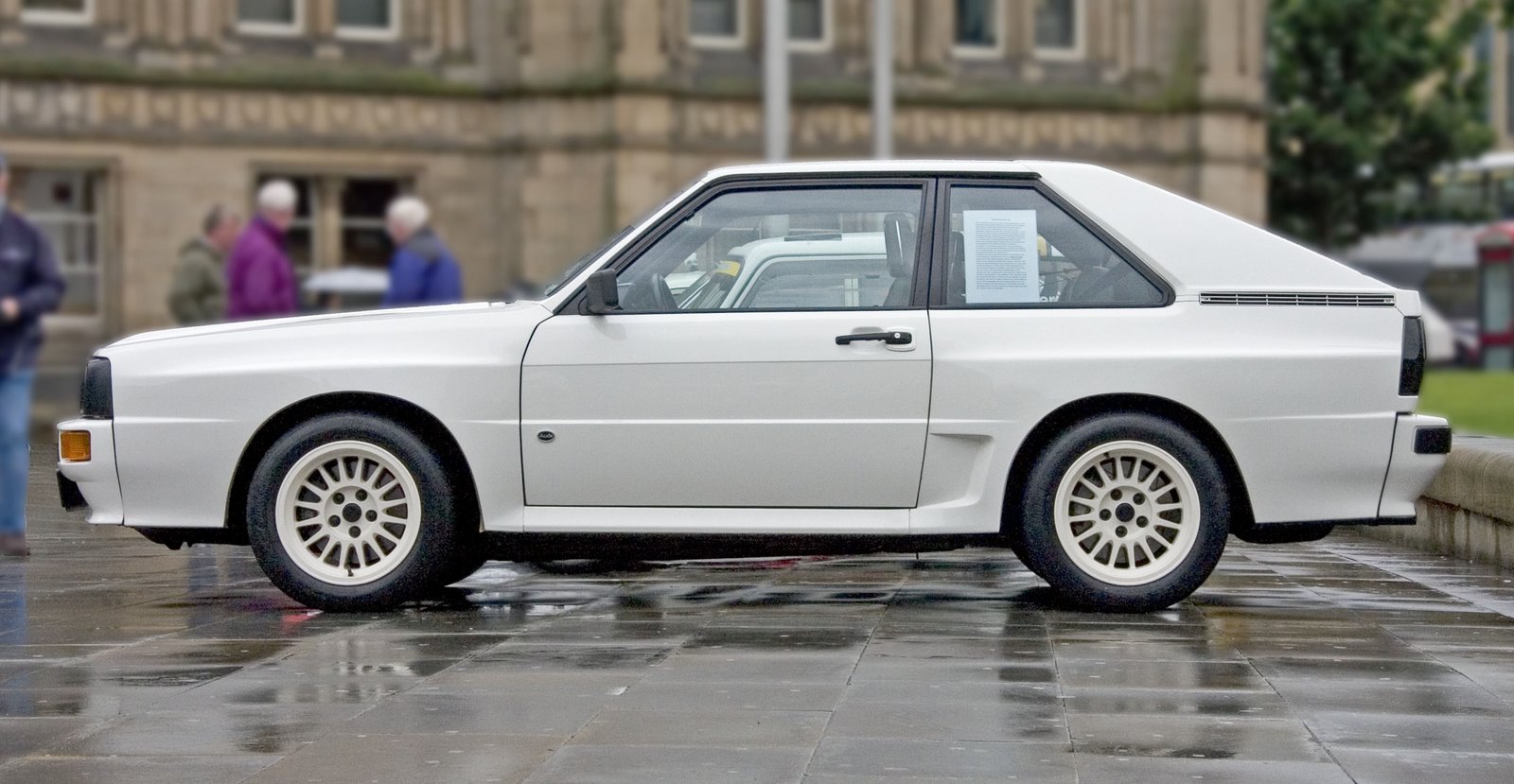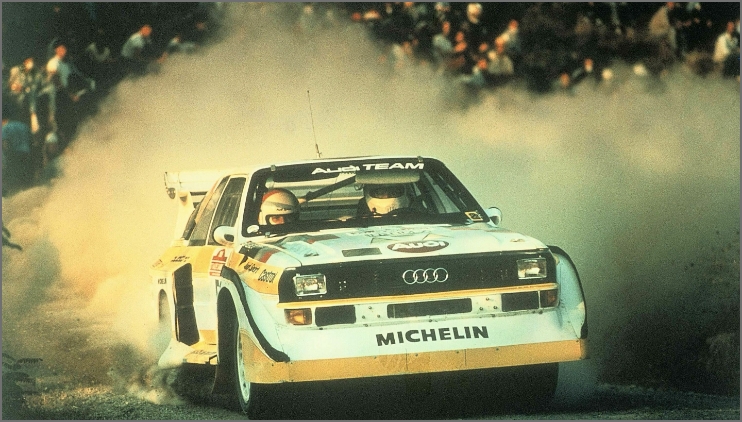History of the Audi Sport quattro
Discover the key moments that shaped the legacy of the Audi Sport quattro — from its revolutionary debut to its status as a motorsport icon
- Storytelling
Keymoments in Sport quattro history
Discover the key moments that shaped the legacy of the Audi Sport quattro — from its revolutionary debut to its status as a motorsport icon

Audi revolutionizes the world of rally racing by introducing its innovative quattro all-wheel drive system. This breakthrough lays the foundation for future dominance in motorsport and paves the way for the creation of the Sport quattro.

Unveiled at the 1983 Frankfurt Motor Show, the Audi Sport quattro was developed as a high-performance homologation model for Group B rallying. A total of 214 units were built. Of these, only 169 were sold as road cars; the remaining vehicles were used for rally competition, testing, and development. With its shortened wheelbase, Kevlar body panels, and a 306 hp turbocharged five-cylinder engine, the Sport quattro was one of the most advanced road cars of its era.

To qualify for Group B rally regulations, Audi was required to produce at least 200 road-legal versions of the Sport quattro. Although that number was officially reached, only 169 units were actually sold to customers. The rest were used internally for motorsport or development purposes. These rare vehicles represent the link between cutting-edge rally technology and real-world performance.

In 1984, Audi’s commitment to innovation paid off on the world stage. With a combination of the proven Quattro A2 and the newly introduced Sport quattro, Audi dominated the World Rally Championship. Swedish driver Stig Blomqvist secured the Drivers’ Title, while Audi clinched the Manufacturers’ Championship.
About the Sport quattro Club
The Audi Sport Quattro was introduced in 1983 as a bold evolution of the original Audi quattro. Designed specifically to compete in the world of rallying, it was Audi’s answer to the fierce competition in the Group B category – a class that pushed automotive engineering to its absolute limits.
What set the Sport quattro apart was its shortened wheelbase, making it more agile and responsive on tight rally stages. Combined with Audi’s revolutionary permanent all-wheel drive system and a powerful five-cylinder turbocharged engine, the Sport quattro quickly became an icon of performance and innovation.
On the rally stages, the car left a lasting mark. Driven by legends such as Walter Röhrl, Stig Blomqvist, and Hannu Mikkola, the Sport quattro secured victories that cemented Audi’s reputation as a pioneer in modern motorsport. Its raw power, distinctive sound, and aggressive stance made it one of the most recognizable rally cars of the 1980s.
Beyond the sport itself, the Sport quattro influenced generations of high-performance cars. Its blend of technology, design, and motorsport pedigree continues to inspire enthusiasts and manufacturers alike. Today, it stands not only as a symbol of Audi’s engineering excellence, but also as a cultural icon – a car that changed the way the world looked at rallying and performance driving.
